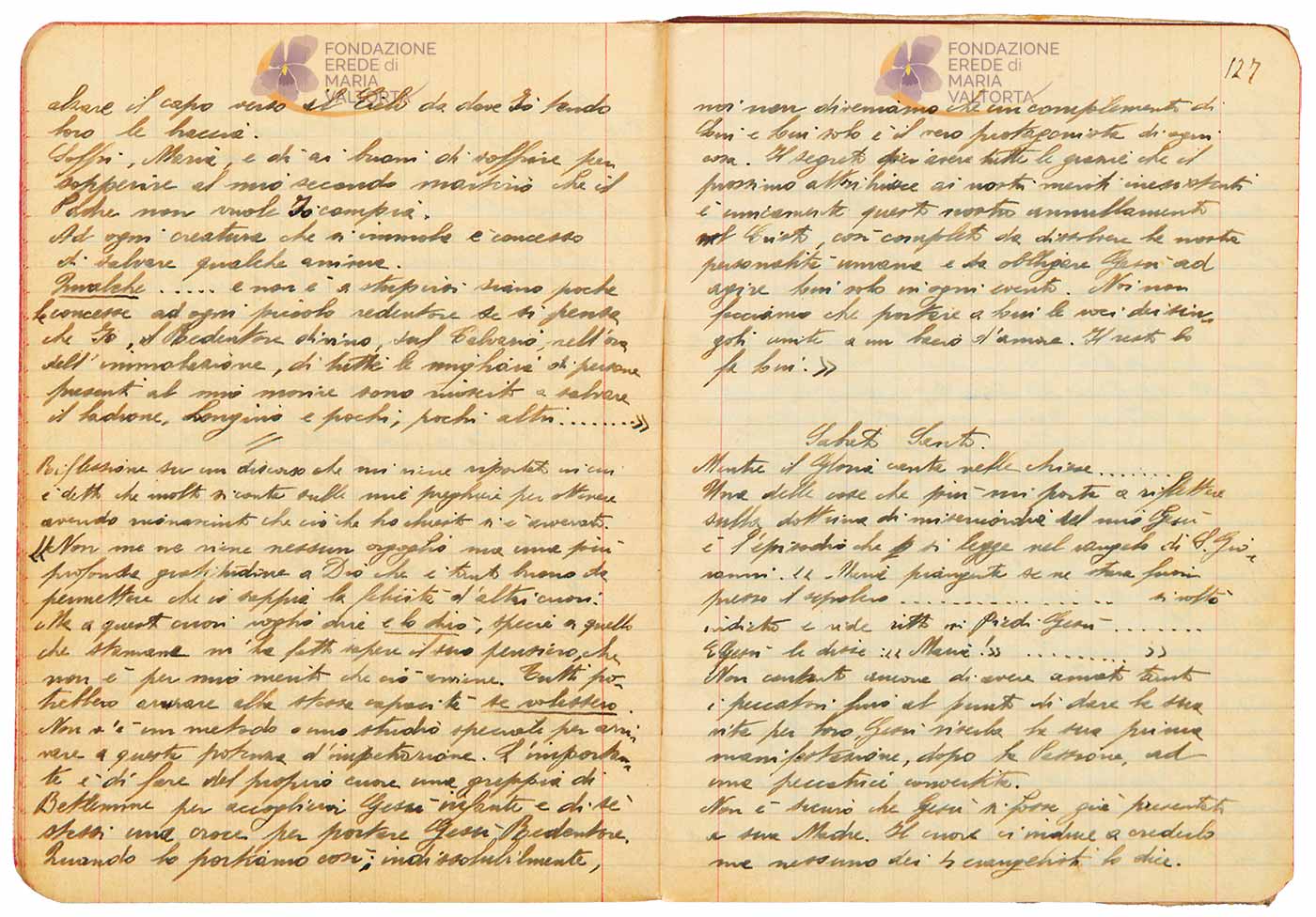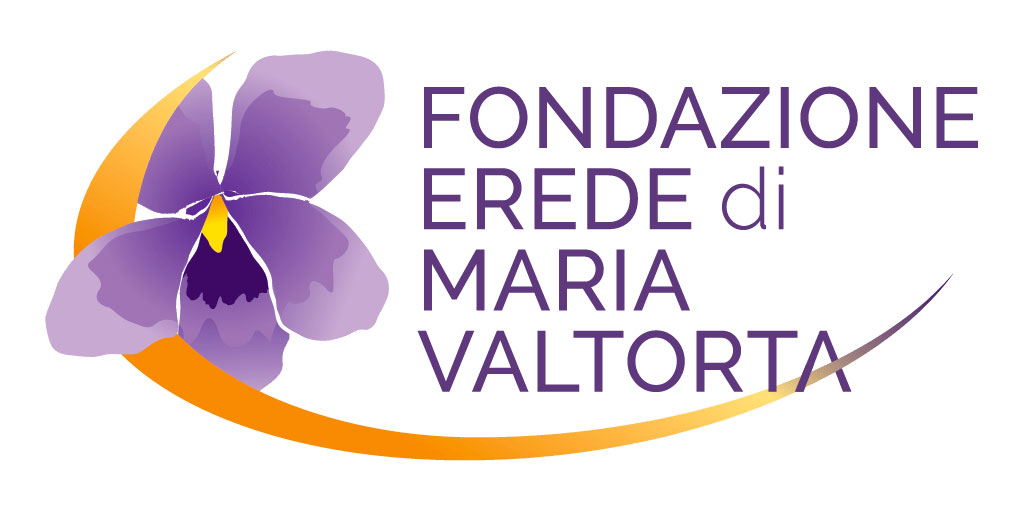The good will to love the Lord!
It was the golden thread that shone in all my actions and directed them, directed them, prevented them from overflowing into paths where my impulse, my ardor for life, could have led them.
Even in the twilight of the worst hours, when I was just a creature of flesh and blood, the golden thread shone and reminded me of God and my gaze rose from Earth to Heaven.
A short look at the first, then longer and longer, until it is fastened forever, and the solo of divine Love that said to me: 'Come to Me!' Turned into a duet in which I too said: 'Come! Come in pain, always come, with everything, but come, come, come, my only Love '.
And to shorten the wait and the distance, following, now, the golden thread, running along it, while before I was only looking at it, I went, went, without asking, without even thinking of being able to reach my current state, but only because I wanted more and more to love.
Maria Valtorta, The Notebooks, February 23, 1946
THE ORIGIN OF THE NOTEBOOKS
In 1942 Maria Valtorta, invalid and sick for eight years and looking for a spiritual director, received a visit from Father Migliorini, a pious Servite priest, who became her confessor and asked her, the following year, to write her memoirs. Being half-seated in bed, with the notebook on the blanket raised by the arched legs, Maria writes with a fountain pen, filling 761 pages at once, after having declared to the spiritual father that she wants to bare her conscience in saying all the good and all the bad. She feels like she has been freed from the past. All she has to do is wait for death, having offered herself totally to God for the good of souls, and instead, the Autobiography written in the spring of 1943, is only the first of her works.
ON APRIL 23 OF THE SAME YEAR, A GOOD FRIDAY, A VOICE ALREADY KNOWN TH HER SPIRIT DICTATES MARY A PAGE OF DIVINE WISDOM .
She confides to the faithful Marta and asks her to call Father Migliorini, who is not long in coming. After the confidential and secretive conversation with Maria, he begins to supply her with notebooks. Maria Valtorta transforms chronic illness into prodigious industriousness. She writes without ever being able to get out of bed, at any hour of the day or night, even amidst atrocious suffering but always sweetened by superhuman spiritual joy.
The center of her literary production is the great work written from 1944 to 1947 and completed with the last episodes in 1951. It is published in ten volumes with the title The Gospel as Revealed to me. The writer interspersed the chapters with various writings that formed, with those of 1943, the works considered minor, published in five volumes. Book of Azaria is the book of lessons, attributed to the angel Azaria, on the readings (excluding the Gospel) of Sunday and festive Masses celebrated from 24 February 1946 to 2 February 1947. Lessons on the Epistle of Paul are 48 lessons on passages of the Pauline Epistle, attributed to the Holy Spirit and written in various months of the years 1948 and 1950.
Finally, The Notebooks is the generic title of three volumes that collect in chronological order – The Notebooks 1943 the first, The Notebooks 1944 the second, The Notebooks 1945-1950 the third – all the remaining writings, which are biblical, hagiographic, prophetic in nature, ascetic, also with autobiographical references, together with other evangelical descriptions and scenes of the first Christian martyrs. The third volume of The Notebooks ends with a comment on some passages of the first four chapters of the book of Revelation.
Starting from the year 1944, the writings reported in the second and third volumes of The Notebooks often intersect with those of the parts or chapters, always preceded by the writing date, of other works by Maria Valtorta. The editor-curator has indicated, in the aforementioned volumes of The Notebooks, the dates not reported and to which parts or chapters of works they refer. Therefore, the volumes of The Notebooks record the daily literary production of Maria Valtorta.
LEARN MORE
read THE NOTEBOOKS by MARIA VALTORTA
It’s possible to purchase the books, or eBooks, via the Centro Editoriale Valtortiano


